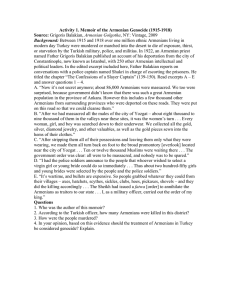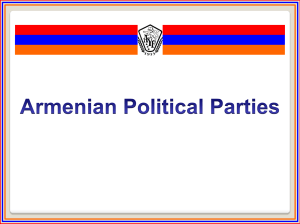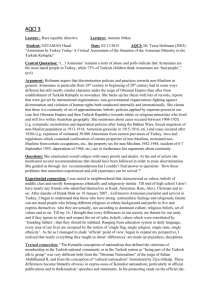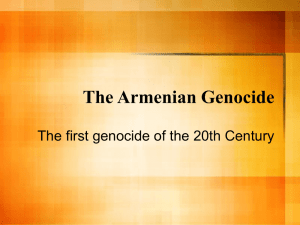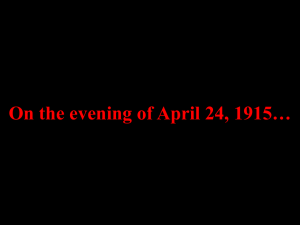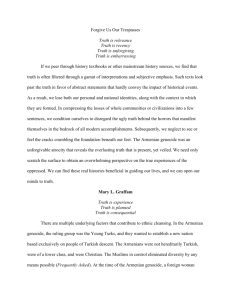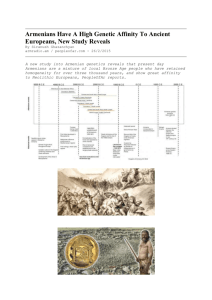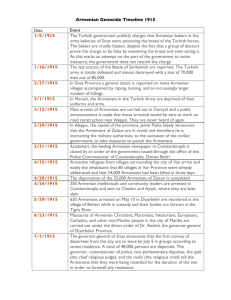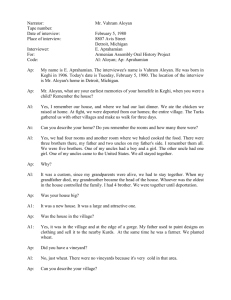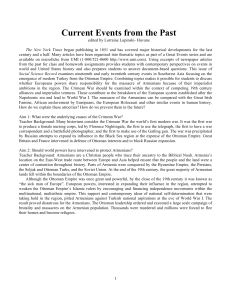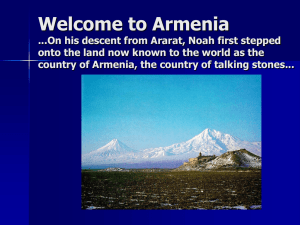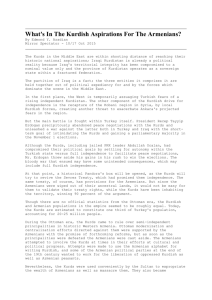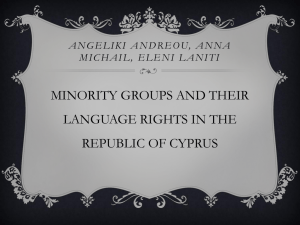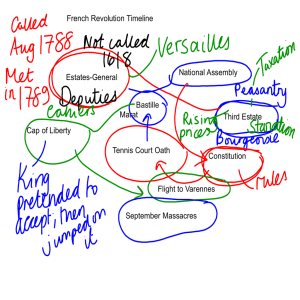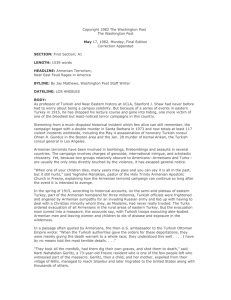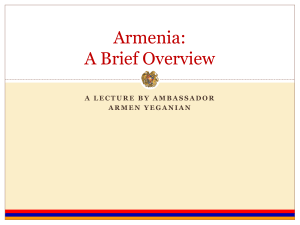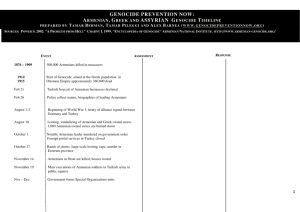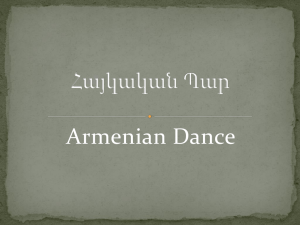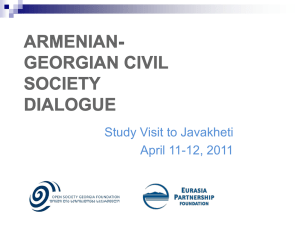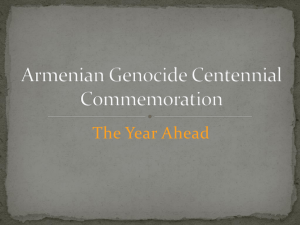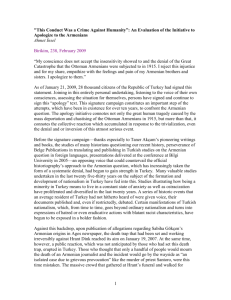The Massacres
advertisement
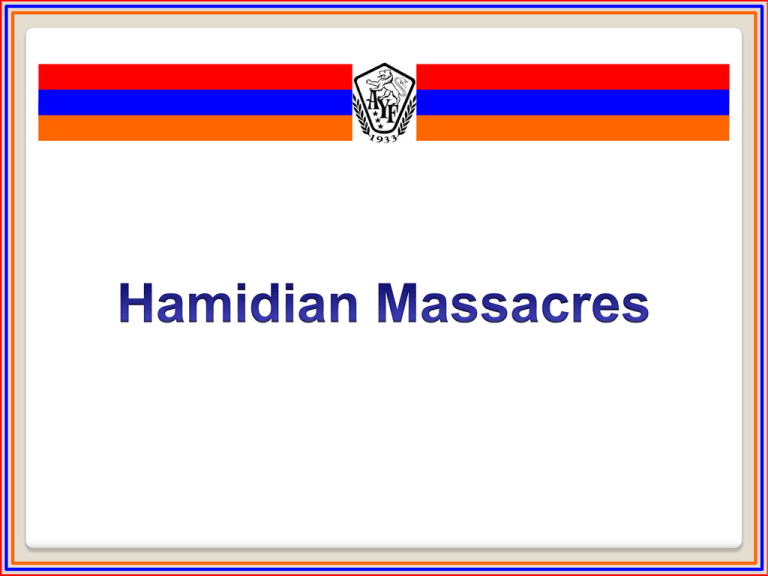
• Following the Russo-Turkish War in 1878 the Ottoman Government was supposed to institute reforms to make life better for Armenians • European governments were supposed to make sure the reforms were implemented – they lost interest in the “Armenian Question” • Armenian revolutionary groups were formed to help bring about these reforms • The largest and most influential of these groups were the Armenagans (1885), Hunchakians (1888) and the Tashnagtsagans (1890) • He was the Sultan of Turkey from 1876 to 1909 • During his reign, Turkey lost control of Roumania, Serbia, Montenegro, Egypt, Sudan, Cyprus, Crete, Kars and Ardahan, Bulgaria • It was at this time that Turkey began being referred to as the “Sick Man of Europe” • He was called the “Bloody Sultan” for what would be known as the Hamidian Massacres, his answer to the Armenian Question • As Armenians began to press for reforms, the Sultan feared that they would break away from the Empire • In 1890, the Sultan formed the Hamideye, a cavalry composed primarily of Kurds modeled after the Russian Cossacks • They were generally used to harass and attack the Armenian population and did what they wanted • In order to insure that the Armenians are too weak to rebel, the Sultan increases the taxes levied against the Armenians • Hamideye and other Kurdish bandits are encouraged to burn Armenian fields, destroy stored grain and hay, and steal livestock • When Armenians don’t have the money to pay taxes, their homes are looted and burned, sometimes they are killed or kidnapped • Attacks begin in Sassoun in August, news does not reach outside world until late September • Sep 26, 1894 - attacks reported in Dalvorik • Oct 31, 1894 – Reports of 6000 killed in Sassoun, 27 villages destroyed • Other areas are also subject to minor attacks • The European governments protest and the massacre subsides by winter • Oct 1-2, 1895 – Thousands massacred in Bolis in response to the Bab Ali demonstration by the Hunchaks • Oct 5, 1895 – over 2000 killed in Trebizond • Massacres then spread to Erzerum, Erzingan, Baiboort, Sepastia, Marsovan, Gesaria, Kharpert, Bitlis, Dikranagert, Malatia, Marash, Aintab, Urfa and other cities • Jun 3, 1896 – The Defense of Van begins Marsovan Trabizon Baiboort Tokat Erzerum Erzingan Sepastia Moush Gesaria Kharpert Sassoun Malatia Marash Aintab Dikranagert Urfa Bitlis Van • Haji Agha, a Muslim, reportedly stood guard at an Aintab hospital, to protect it from an anti-Armenian massacre in 1895 • As word of the massacres spread, of Van decided to defend themselves the Armenians • Led by Armenagan, Hunchaks and Tashnags, the people held out over a week against the Turkish Army, Hamideye, and Kurds • The Europeans intervened, and 1000 Armenian defenders agreed to leave Van and go to Persia under protection of the Turkish Army • On the way, the Turks allowed the Mazrig Kurds to kill almost all of the Armenian Fedayees • Over 20,000 Armenians in Van were then massacred • In 1897, the massacres came to an end. Along with the killing, many Armenians starved to death during the harsh winters of 1895-96 • The Sultan was satisfied that the Armenian Question had finally been resolved • The European Powers did nothing to protect the Armenians from massacre • The Russians, who 20 years before had gone to war with Turkey and freed Kars and Ardahan, under the pretext of helping the Armenians, were focused on their expansion to the east • The Hamidian Massacres from 1894-96, and the harsh conditions which preceded them, caused many Armenians to flee to other countries, including the US • The Hamidian Massacres caused Americans to learn about Armenia, and many influential Americans took up the cause, including • Clara Barton founder of the American Red Cross • Julia Ward Howe, author of the “Battle Hymn of the Republic” • Diplomats, prominent writers, governors, etc • Set the stage for the Armenian Genocide 20 years later
